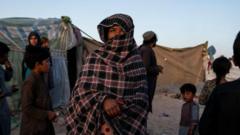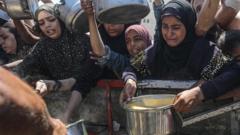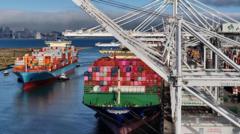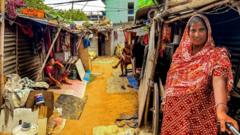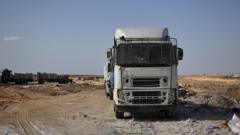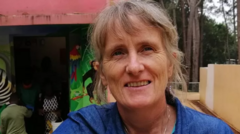In the southern Mexican city of Tapachula, approximately 3,000 Venezuelan migrants, initially seeking refuge or a better life, are now attempting to return home due to lack of resources, paperwork, and opportunities. This reversal in migration trends highlights the increasing desperation among those caught in political and economic turmoil.
Stranded in Mexico: Venezuelan Migrants Face Dire Circumstances

Stranded in Mexico: Venezuelan Migrants Face Dire Circumstances
Thousands of Venezuelans and other migrants find themselves trapped in Mexico with no means to return to their home countries or move forward.
In Tapachula, Mexico—a city that has historically served as a crucial crossroad for migrants—an unsettling phenomenon is unfolding. Thousands of Venezuelan migrants, once hopeful of reaching the United States, now find themselves stranded, yearning to return to their homeland but hindered by insufficient documentation and finances.
One such migrant is Keila Mendoza, who fled Venezuela eight years ago in search of a better future. Her journey took her through Colombia, but now, with her children by her side and a lack of resources, she stands at the front lines of a humanitarian crisis in the heart of southern Mexico. The blaring sun beats down on her as she waits with a restless crowd, all desiring to board the limited flights back to Venezuela.
Currently, around 3,000 Venezuelans are stuck in Tapachula, a city that was brimming with people seeking a new life. The previously bustling shelters are eerily empty now, reflecting a sharp decline in migration activity as migrants are forced to reverse their journeys. While once hopeful and energetic, the area now resonates with despair, as families who populated parks and courtyards have largely vanished.
The Suchiate River, which once saw many crossing into Mexico, has adopted a newfound stillness. Those who once trekked toward a future in the U.S. are now retracing their steps or making their way back into Guatemala—thus marking a poignant turn in their migration story.
Humanitarian flights exist, but they are limited. Many migrants face a harsh reality: without proper documentation, they cannot move forward to the U.S., nor can they return home. As a result, they become ensnared in a situation that is both a physical and psychological setback. The hope of migration has turned into a struggle for survival in a foreign land.
One such migrant is Keila Mendoza, who fled Venezuela eight years ago in search of a better future. Her journey took her through Colombia, but now, with her children by her side and a lack of resources, she stands at the front lines of a humanitarian crisis in the heart of southern Mexico. The blaring sun beats down on her as she waits with a restless crowd, all desiring to board the limited flights back to Venezuela.
Currently, around 3,000 Venezuelans are stuck in Tapachula, a city that was brimming with people seeking a new life. The previously bustling shelters are eerily empty now, reflecting a sharp decline in migration activity as migrants are forced to reverse their journeys. While once hopeful and energetic, the area now resonates with despair, as families who populated parks and courtyards have largely vanished.
The Suchiate River, which once saw many crossing into Mexico, has adopted a newfound stillness. Those who once trekked toward a future in the U.S. are now retracing their steps or making their way back into Guatemala—thus marking a poignant turn in their migration story.
Humanitarian flights exist, but they are limited. Many migrants face a harsh reality: without proper documentation, they cannot move forward to the U.S., nor can they return home. As a result, they become ensnared in a situation that is both a physical and psychological setback. The hope of migration has turned into a struggle for survival in a foreign land.

